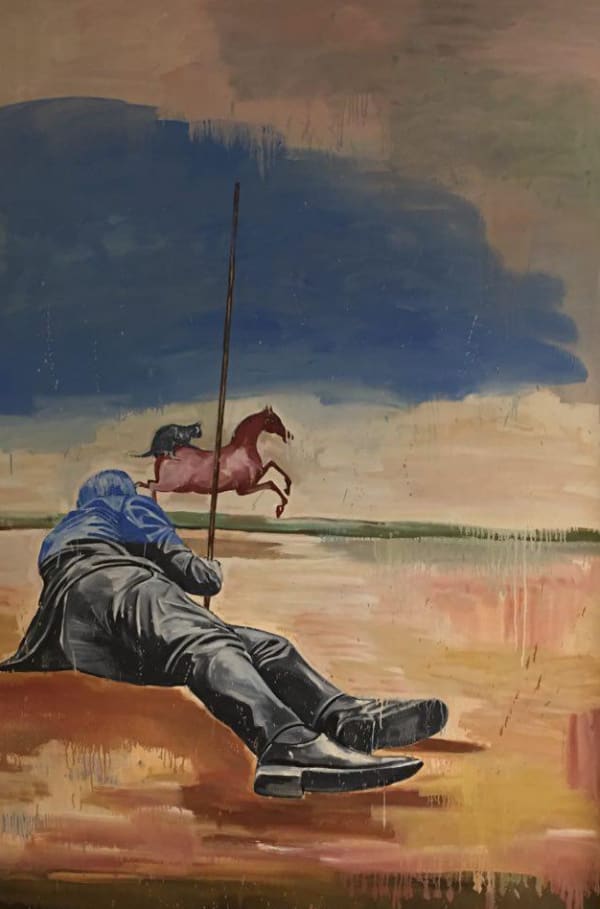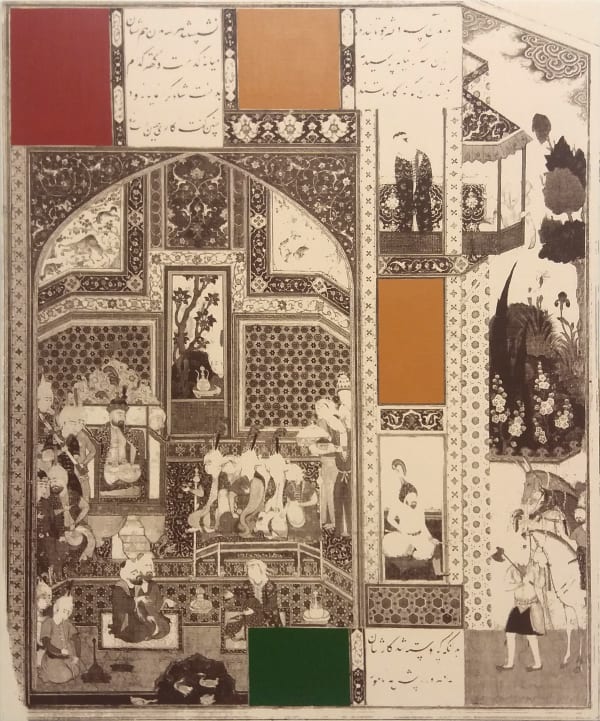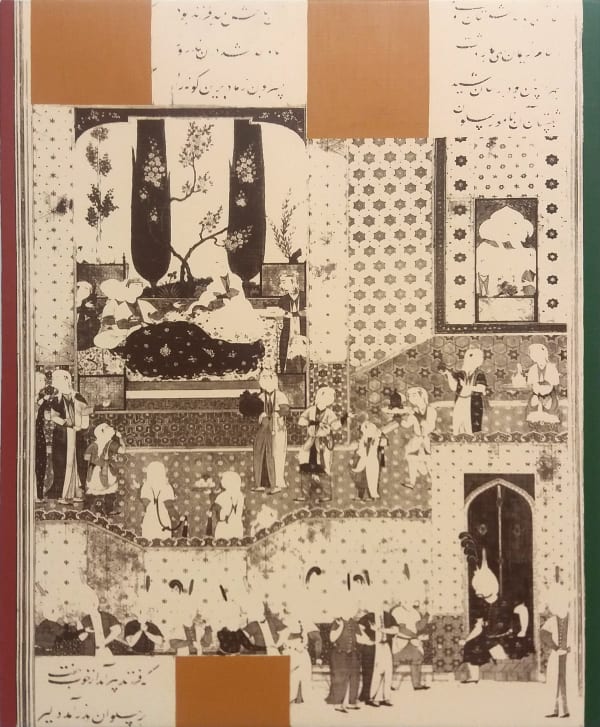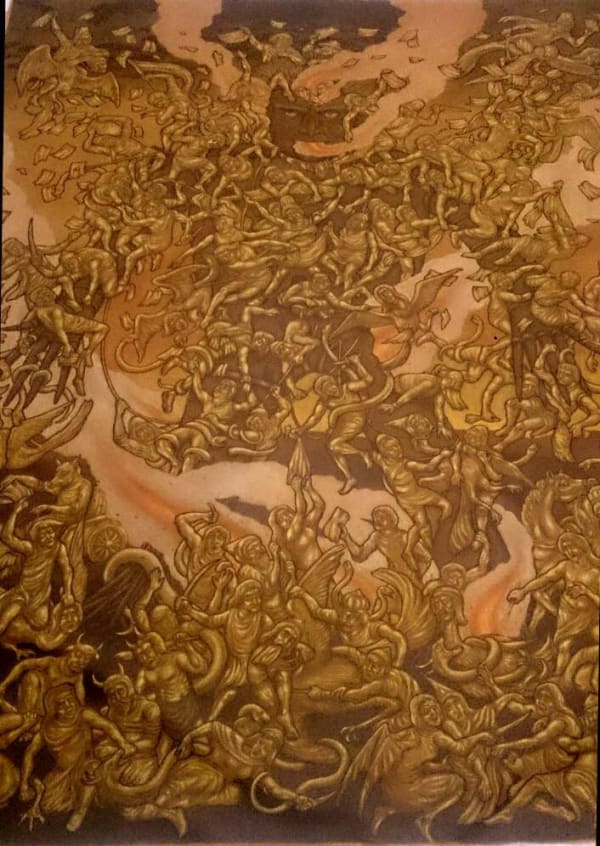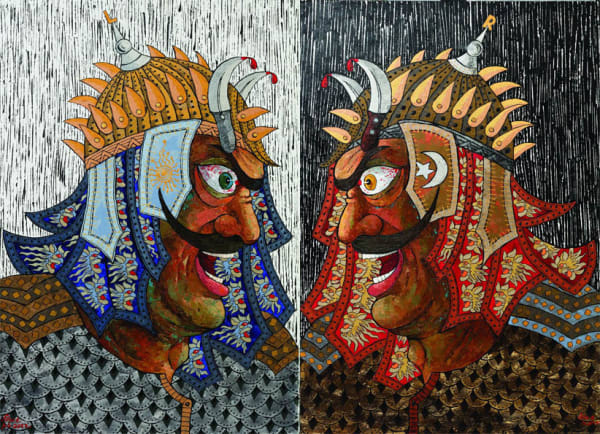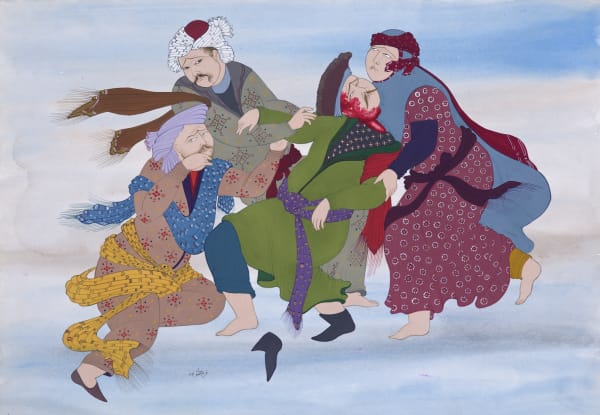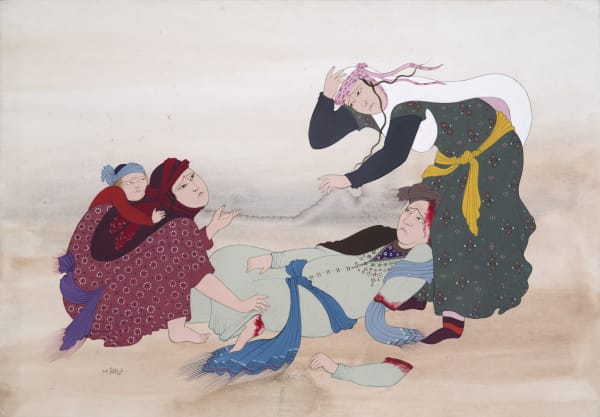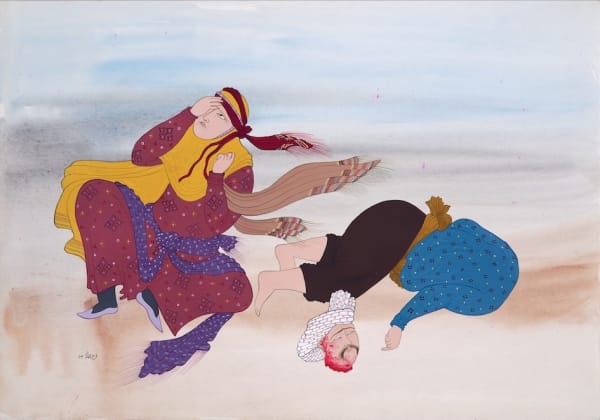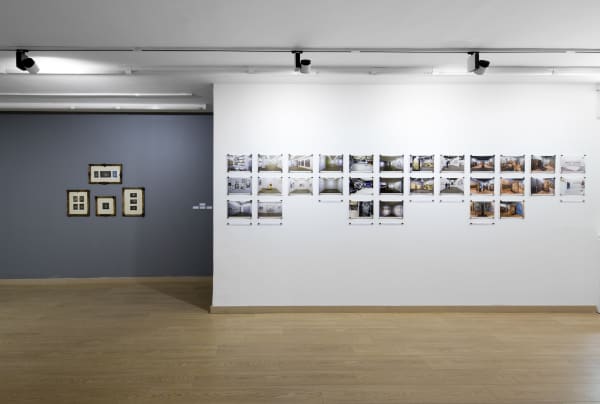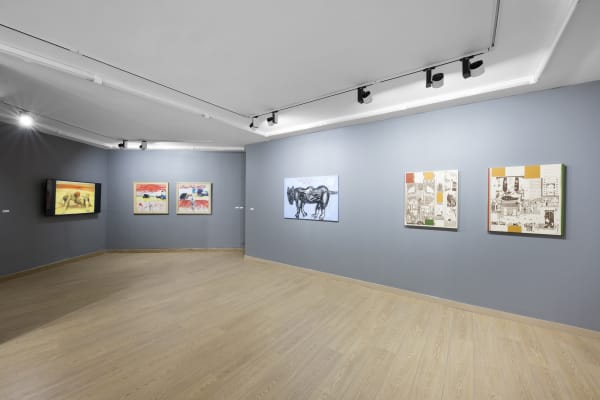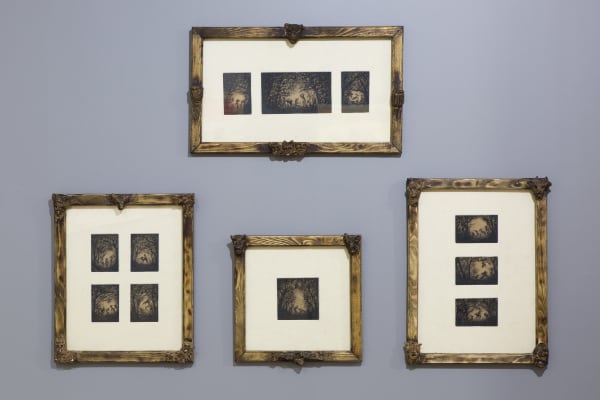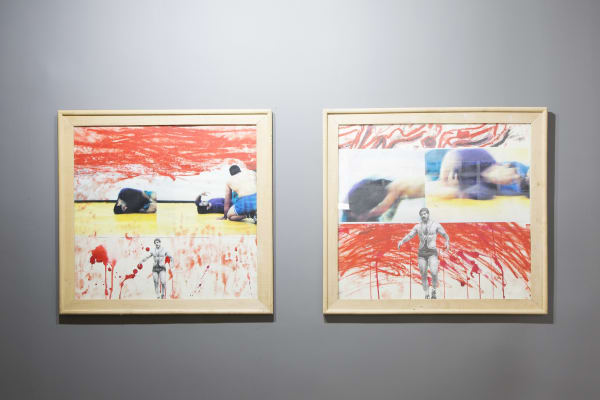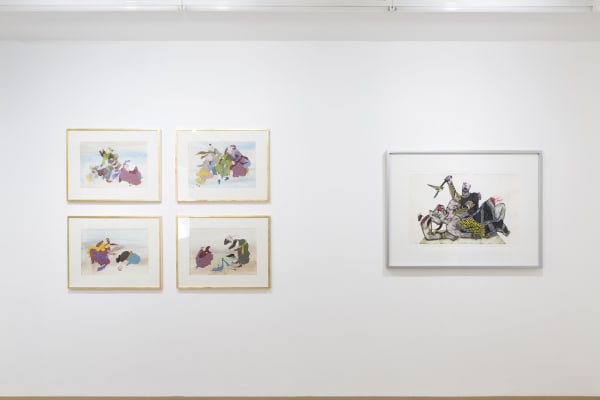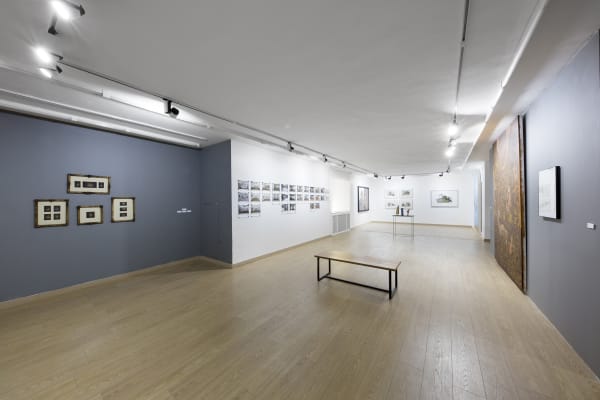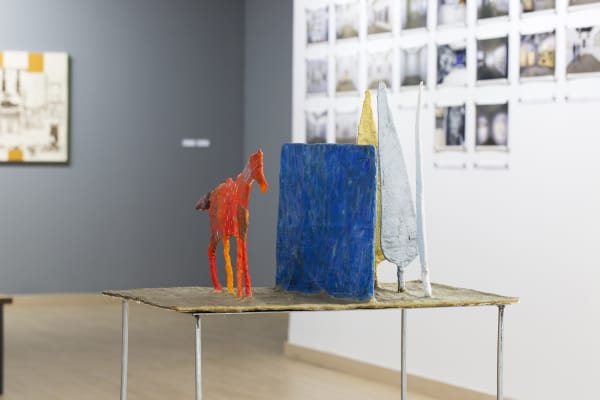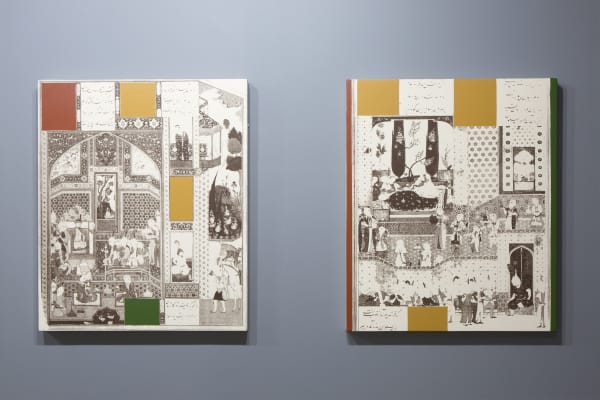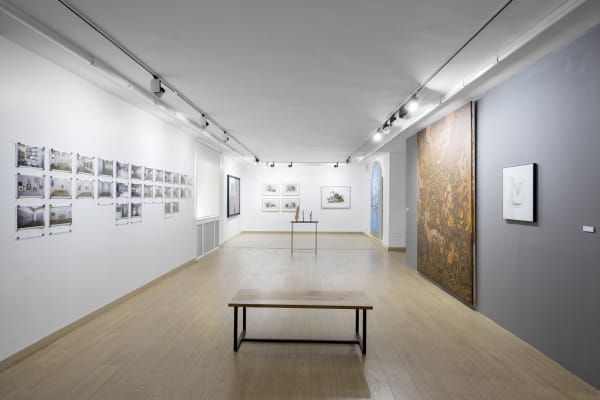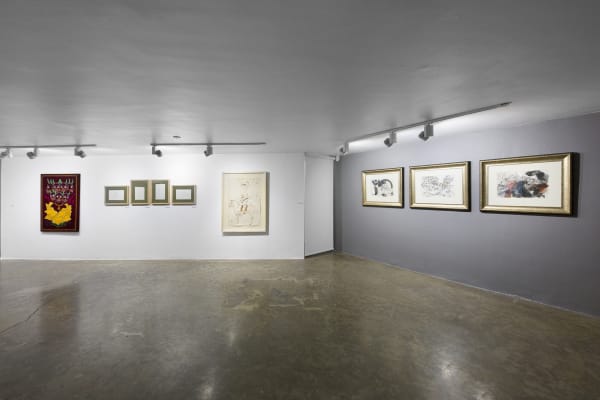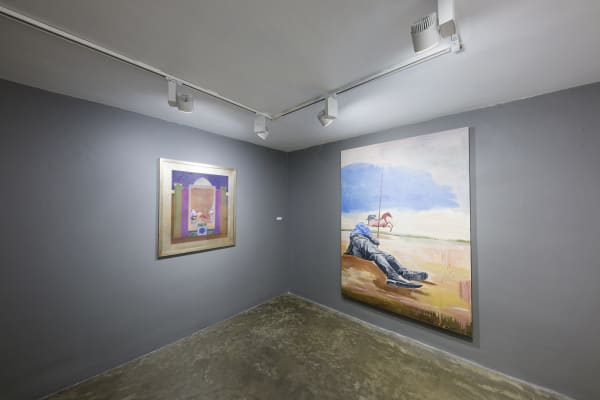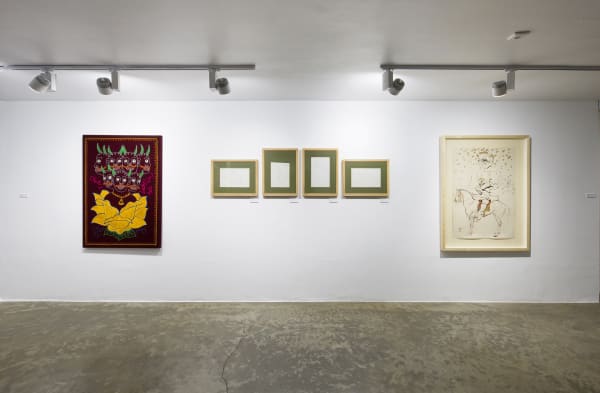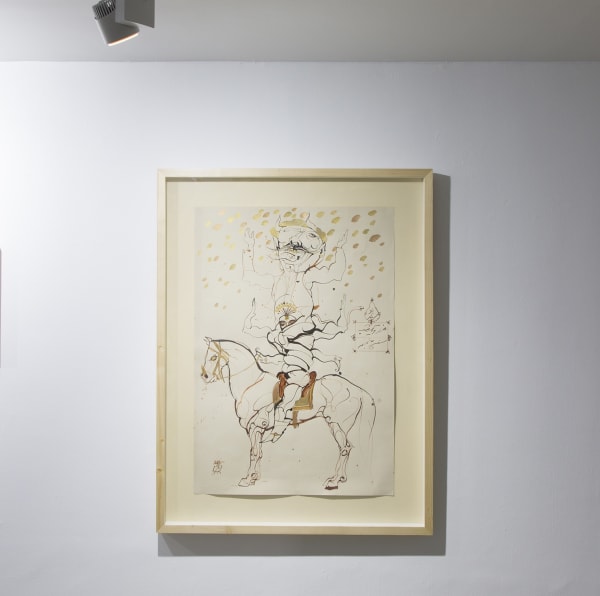"Mossavar-Nameh": Dastan's Basement & Dastan+2
A Large Exhibition of Mossavar-Nameh Project at Dastan+2 and Dastan's Basement
Dastan is pleased to announce “Mossavar-Nameh” at Dastan’s Basement and Dastan+2. The exhibition will be open to public viewing from June 22 to July 20, 2018.
This most recent incarnation of Mossavar-Nameh (lit. ‘Book of Illustration’) includes works by twentieth- and twenty-first-century Iranian masters Ardeshir Mohassess, Fereydoun Ave, Ali Akbar Sadeghi, Ahmad Amin Nazar, Farshid Maleki, Farah Ossouli, and Nicky Nodjoumi are presented along with pieces by more contemporary Iranian artists, including Pouya Afshar, Shahriar Ahmadi, Mohsen Ahmadvand, Amin Montazeri, Peybak, Kour Pour, and Iman Raad.
The current presentation of Mossavar-Nameh is the most elaborate edition of the project and a result of almost five years of research. The curatorial concept of Mossavar-Nameh was designed through studying many twentieth- and twenty-first-century Iranian artists with regards to their sources of inspiration, themes, and techniques throughout their careers.
The criteria for including artworks/artists in Mossavar-Nameh Project fall into three broad categories: 1. Content; 2. Appearance/Form; and 3. The Artist. Each category is detailed as follows:
1.1. Content—NARRATIVE The artist expresses ideas through illustration/visualization/animation of literary texts and narrativity using images that entail sequencing of the fictive events, either chronologically or arbitrarily
1.2. Content—SATIRE The artist uses techniques such as satire, parody, or comic exaggeration in order to portray sociocultural or sociopolitical issues and comment on them. In this course, the artist uses metaphorical language and other figurative techniques such as parody, fable, and allegory
1.3. Content—HISTORY & MYTHOLOGY The artworks are inspired by mythological history, sometimes mixed with actual history and politics
1.4. Content—VIOLENCE The artist portrays instances of patriarchal violence, war practice, male chauvinism and macho men in the artworks
2.1. Appearance—CARTOONISTIC The artist creates artworks that are cartoon-like in nature, expressed through illustration techniques or techniques inspired by illustration or its contemporary practices
2.2. Appearance—HISTORIC IMAGERY The artist refers to historical or literary texts such as myths, legends, religious stories, folk stories and employs of classical allusions and analogies
2.3. Appearance—INTERCONNECTIONS The artist invokes visual resources and cites artists, methods, and techniques from others
3. THE ARTIST The artist becomes part of a larger tradition of artists, hence in Mossavar-Nameh’s research, the trends in their works become more significant than their biographical information






